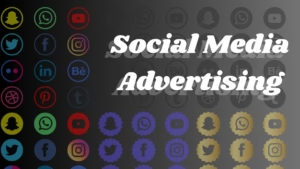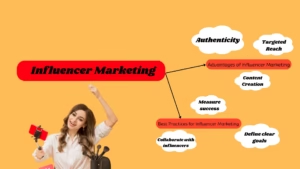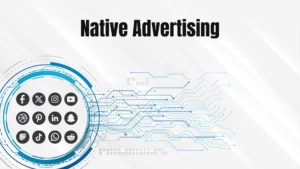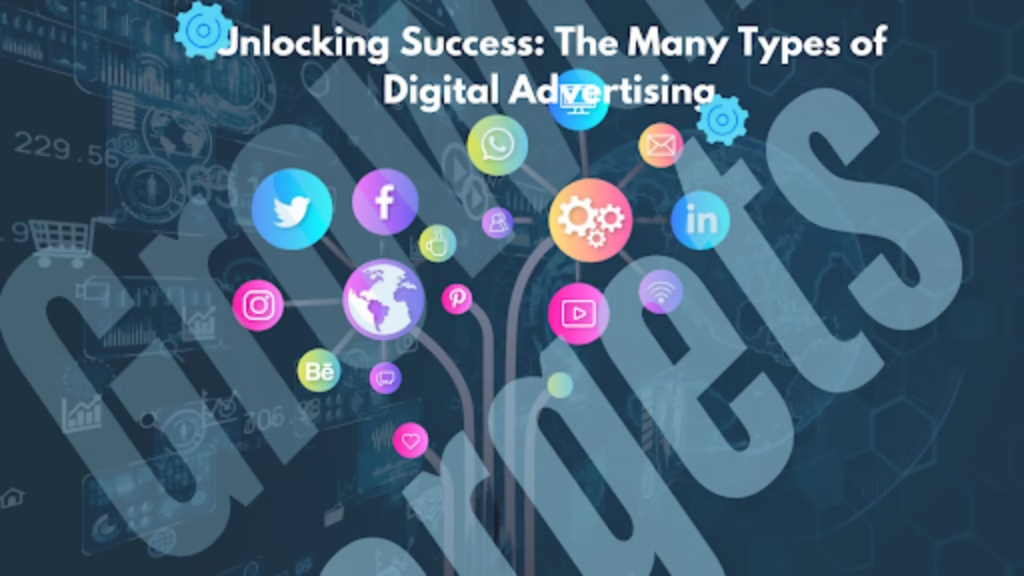In today’s fast-paced, tech-driven world, businesses and organizations rely heavily on digital advertising to increase their visibility and reach potential customers. Digital advertising provides businesses with a cost-effective way to market their products and services while enabling precise targeting and tracking.
From social media platforms to search engines, digital advertising encompasses a variety of methods that can be customized to suit a wide array of business objectives. In this blog post, we will explore the different types of digital advertising, their advantages, and best practices.
1.Search Engine Advertising (Paid Search)

Digital advertising encompasses a variety of strategies designed to engage consumers through online platforms. Among the most prominent types of digital advertising is Pay-Per-Click (PPC), which includes ads on search engines like Google, Bing, and Yahoo. Advertisers bid on keywords related to their products or services, triggering ads to appear in various spots on the search results page. Google Ads is the dominant platform for search engine advertising, offering sophisticated targeting based on factors such as search queries, location, and device.
Another popular type of digital advertising is display advertising, which involves placing visual ads (banners, videos, and interactive content) on websites, apps, and social media platforms. These ads are often designed to capture the attention of users while they browse online content. Display ads can be targeted based on user interests, behavior, and demographics, making them highly effective in reaching a specific audience.
Social media advertising is another key form of digital advertising that leverages platforms like Facebook, Instagram, LinkedIn, and Twitter. Through sponsored posts and ads, businesses can target users based on their interests, behaviors, and even engagement with other content. This form of advertising is ideal for building brand awareness, driving traffic, and fostering engagement with consumers.
Lastly, email marketing remains one of the most cost-effective types of digital advertising. Marketers send personalized ads or newsletters directly to a subscriber’s inbox, allowing for direct communication with potential customers. This strategy is particularly effective for retaining customers, promoting special offers, and nurturing leads.
By utilizing different types of digital advertising, businesses can create a comprehensive marketing strategy that reaches consumers at various touchpoints throughout their online journey.
Advantages of Search Engine Advertising
- Targeted Reach: Users who are actively looking for information about your company see your ads. This high level of intent increases the likelihood of conversions, as users are already interested in what you offer.
- Cost Control: Advertisers only pay when users click on their ads (hence “pay-per-click”). This makes PPC a highly cost-effective model, as advertisers can set a daily budget and adjust bidding strategies according to performance.
- Measurable ROI: PPC solutions give companies access to powerful analytics tools that let them monitor the effectiveness of their ads in real time. Metrics like clicks, impressions, conversion rates, and cost-per-click can be monitored to optimize campaigns and ensure a positive return on investment.
Best Practices for Search Engine Advertising
- Keyword Selection: Carefully research and select relevant keywords that align with user search intent to attract the right audience.
- Ad Copy Optimization: Craft compelling ad copy that includes a clear call to action and matches the user’s search query.
- Landing Page Quality: Ensure the landing page is relevant, well-designed, and optimized for conversions to increase your ad’s effectiveness.
2. Display Advertising

Digital advertising comes in many forms, each designed to help businesses connect with their target audience across different online platforms.Display advertising is among the most popular forms of digital advertising. This strategy involves the use of visual content like banners, images, videos, and rich media to promote products or services. Display ads can be found on websites, social media platforms, and apps, often through ad networks that distribute ads across a broad range of partner sites.
Another popular type of digital advertising is search engine advertising, often referred to as Pay-Per-Click (PPC). Through platforms like Google Ads, advertisers bid on keywords relevant to their business, ensuring their ads appear when users search for those terms. The ads can be shown in various locations on search engine results pages (SERPs), including the top, bottom, or side of the page. This approach works well for focusing on consumers who are actively looking for particular goods or services.
Social media advertising stands out as a dynamic pillar among the diverse forms of digital advertising.
Additionally, email marketing continues to reign as one of the most impactful and conversion-driven digital advertising strategies. By sending personalized messages directly to subscribers, businesses can keep their audience engaged with special offers, updates, and promotions. This strategy helps build long-term customer relationships while providing a direct communication channel to deliver tailored content.
By understanding and utilizing various types of digital advertising, businesses can craft a comprehensive digital strategy that effectively reaches and engages their audience across multiple platforms. Each method plays a vital role in driving growth and improving brand visibility.
Advantages of Display Advertising
- Brand Awareness: Display ads are highly visual and can be positioned in prominent locations on websites, helping businesses increase brand visibility and recognition. This makes it an effective tool for reaching large audiences and creating lasting impressions.
- Targeted Reach: Advertisers can target display ads based on various factors, including demographics (age, gender), interests, online behaviors, and even geographic location.The relevance of the advertisements displayed to viewers is improved by this precision targeting.
- Engagement increases:when display ads include interactive features like video clips or quiz-style formats.These types of ads can encourage users to click, explore, and even make purchases, improving user interaction and conversion rates.
Best Practices for Display Advertising
- Create Visually Appealing Ads: The design of the ad should be eye-catching and convey the brand’s message clearly.To spark interaction, combine strong design, compelling storytelling, and a well-defined call to action.
- Ad Placement Optimization: Choose ad placements on relevant websites or platforms that align with your target audience’s interests and behaviors. Placing ads on sites that are visited by your audience increases the chances of conversions.
- Remarketing: Display ads are ideal for remarketing strategies. Advertisers can target users who have previously visited their website but did not convert, keeping the brand top of mind and encouraging them to return and complete a purchase.
3. Social Media Advertising

Social media advertising is a prominent strategy within the broader landscape of Types of Digital Advertising. It involves creating and promoting sponsored ads across platforms like Facebook, Instagram, Twitter, LinkedIn, TikTok, and more. These platforms offer a highly effective way for businesses to engage with potential customers.
A major benefit of social media advertising lies in its capacity to precisely target and engage specific audience segments. Through detailed demographic data, interests, behaviors, and location-based targeting, social media ads allow brands to connect with users who are most likely to engage—making it one of the most precise Types of Digital Advertising.
Ads on social media can appear in various formats, including users’ feeds, stories, and even as sponsored content within posts. This versatility makes social media advertising an interactive and dynamic choice for brands looking to engage with their audience in a natural, non-intrusive way.
Compared to other Types of Digital Advertising, social media advertising stands out for its level of interactivity. Users can like, comment, share, and even purchase directly through the ad, allowing businesses to create meaningful conversations and drive instant action.
With the rise of visual content, video ads on platforms like TikTok and Instagram Stories have become especially popular. These engaging formats make it easier for brands to showcase their products or services in creative ways, maximizing the impact of their campaigns within the Types of Digital Advertising ecosystem.
As social media continues to evolve, so does the sophistication of ad targeting and personalization. Advertisers can now use machine learning and AI to optimize campaigns in real time, ensuring that each ad is shown to the most relevant audience—a significant advantage within the diverse Types of Digital Advertising.
Integrating social media advertising into a comprehensive digital marketing plan is crucial for brands looking to boost engagement and drive measurable conversions. The ability to track results, tweak targeting, and adjust creative assets in real-time makes it one of the most agile and efficient Types of Digital Advertising available today.
Advantages of Social Media Advertising
- Precise Targeting: Social media platforms offer advanced targeting options that allow businesses to reach specific audiences based on a wide range of factors such as age, gender, interests, job titles, behaviors, and even past interactions with your brand.This makes it more likely that the most relevant users will see your adverts.
- High Engagement: Social media ads often encourage direct interaction through likes, comments, shares, and clicks.This boosts interaction and helps brands build a deeper, more personal bond with their audience. The interactive nature of these ads also increases brand visibility and user participation.
- Cost-Effective: Social media advertising can be highly cost-efficient, with flexible budgets that allow businesses to start small and scale up as they see results. Many platforms offer various pricing models, including cost-per-click (CPC) and cost-per-impression (CPM), allowing businesses to choose the approach that best suits their goals and budget.
Best Practices for Social Media Advertising
- Tailor Content to Each Platform: Design your ads to fit the unique format and audience of each social media platform. For example, visual ads perform well on Instagram, while more text-heavy content may be better suited for LinkedIn.
Employ A/B testing to determine which ad versions your audience responds to the most.Adjust your creative, targeting, and messaging accordingly. - Monitor and Optimize: Track metrics such as engagement, click-through rates (CTR), and conversions to measure your ad’s performance. Use these insights to sharpen your campaign strategy for maximum impact.
4. Influencer Marketing

Influencer marketing is a powerful form of advertising that taps into the reach and credibility of individuals with large social media followings. This strategy, one of the popular Types of Digital Advertising, involves collaborating with influencers on platforms like Instagram, YouTube, or TikTok to authentically promote your brand.
Influencers seamlessly incorporate products into their content, providing a natural and relatable way to showcase the brand. This approach stands out among the various Types of Digital Advertising because it leverages trust and personal connection, which traditional ads often lack.
What makes influencer marketing so effective within the Types of Digital Advertising landscape is its ability to target highly engaged audiences. These influencers have already cultivated loyal followings, making them ideal partners for reaching niche demographics in a more genuine and impactful manner.
This form of marketing doesn’t just focus on awareness; it drives real conversions. By aligning your brand with influencers who genuinely resonate with their audience, you create authentic endorsements that inspire action, a unique strength within the array of Types of Digital Advertising.
Beyond traditional sponsored posts, influencer marketing can also include product reviews, unboxing videos, and even co-branded campaigns. These methods integrate your brand into the influencer’s regular content, blending promotional efforts with their personal style, which is a powerful element in the many Types of Digital Advertising.
As brands continue to invest in diverse Types of Digital Advertising, influencer marketing remains one of the most potent methods for achieving organic growth and fostering long-term relationships with potential customers. Its versatility allows for deep engagement, from storytelling to product launches, driving both immediate and lasting results.
Advantages of Influencer Marketing
- Authenticity: Influencers have gained the followers’ respect and confidence. Their endorsements can appear more genuine compared to traditional ads, making them more persuasive.
- Targeted Reach: By selecting influencers whose followers match your target demographic, you can achieve highly relevant reach.
- Content Creation: Influencers often create high-quality content that aligns with your brand’s messaging, which you can repurpose for your own marketing channels.
Best Practices for Influencer Marketing
Work together with influencers whose followers share the same values as your target market and business.
Define clear goals and expectations for the partnership, including deliverables and key performance indicators (KPIs).
Engagement numbers, conversion rates, and the influencer’s effect on brand recognition are all ways to gauge performance.
5. Video Advertising

As digital marketing continues to evolve, video advertising has solidified its position as a vital and highly effective content medium. As one of the most engaging Types of Digital Advertising, video ads capture the attention of users across multiple platforms, from social media to video-sharing sites.
Platforms like YouTube, TikTok, and various social media channels now offer robust opportunities for video-based ads. These ads come in various forms, such as short pre-rolls that play before videos, in-stream ads integrated within content, and sponsored video content crafted by brands or influencers.
Video ads stand out among the Types of Digital Advertising due to their ability to convey complex messages in a short, visually appealing format. They combine storytelling with powerful visuals, making them effective in capturing consumer interest and encouraging conversions.
Within the spectrum of Types of Digital Advertising, video content offers the advantage of being highly shareable. When users find compelling or entertaining video ads, they are more likely to share them with their networks, thus amplifying the brand’s reach.
Moreover, video ads offer targeted engagement, allowing brands to tailor their content based on user behavior and preferences. This personalized approach boosts interaction rates, making video advertising one of the most powerful Types of Digital Advertising for driving brand awareness and loyalty.
As video consumption continues to soar, it’s clear that video ads will play an even more pivotal role in the future of Types of Digital Advertising. Whether used for product demonstrations, customer testimonials, or creative campaigns, video offers a unique advantage in delivering a memorable and impactful marketing message.
Advantages of Video Advertising
- Engagement: Video is one of the most engaging forms of content, allowing brands to tell compelling stories and showcase products in action.
- Higher Conversion Rates: Videos can help clarify product benefits, leading to increased customer confidence and higher conversion rates.
- Versatility: You can use video ads in multiple formats, including pre-roll, mid-roll, post-roll, and even as embedded content within blogs and articles.
Best Practices for Video Advertising
Keep videos short and concise, especially on platforms like Instagram and TikTok, where attention spans are shorter.
Include a clear call to action (CTA) to guide viewers toward the next step, such as visiting your website or making a purchase.
Ensure your videos are mobile-optimized, considering the growing mobile audience on platforms like YouTube and social media.
6. Native Advertising

Because native advertising seamlessly merges with the surrounding content, it often feels more organic and less disruptive to users. This subtle approach helps build trust and engagement, making it a favored technique within the many Types of Digital Advertising.
Native ads are typically encountered in the form of sponsored articles, promoted blog posts, or integrated social media content. These placements are designed to mirror the platform’s editorial style, which enhances user experience while still driving marketing results.
Among the diverse Types of Digital Advertising, native advertising holds a unique place due to its non-intrusive nature and high relevance to the audience. Unlike traditional banner ads, it doesn’t interrupt the content flow, which often leads to higher interaction rates.
Other popular Types of Digital Advertising include display ads, search engine marketing (SEM), video ads, influencer marketing, and programmatic advertising. Each offers a distinct set of benefits tailored to various goals—whether it’s brand awareness, lead generation, or customer retention.
As digital strategies continue to evolve, understanding the full spectrum of Types of Digital Advertising is essential for brands aiming to maximize ROI. From immersive video formats to AI-driven targeting, the advertising landscape offers endless possibilities.
Choosing the right Types of Digital Advertising depends on the target audience, campaign objectives, and platform strengths. For example, search ads excel in intent-driven marketing, while social media ads offer robust audience segmentation and engagement.
In a world where attention is fleeting, businesses must leverage the most suitable Types of Digital Advertising to remain competitive and relevant. Whether it’s native ads, emails, or sponsored influencer content, the right mix can elevate your brand’s digital presence.
Advantages of Native Advertising
- Non-Intrusive: Since native ads match the design and style of the platform’s content, they are often less disruptive to the user experience.
- Higher Engagement: Native ads are designed to provide value, whether through informative articles or engaging product recommendations, leading to higher user engagement.
- Credibility: Because native ads provide useful and relevant content, users are more likely to view them as credible compared to traditional banner ads.
Best Practices for Native Advertising
Focus on creating content that is both informative and subtly promotes your product or service.
To keep things transparent for users, make sure the advertisement is properly marked as sponsored or branded content.
Monitor key metrics like engagement rates, time on page, and social shares to evaluate the success of your native ads.
7. Email Marketing

Email marketing continues to be one of the most budget-friendly yet powerful digital marketing approaches for businesses aiming to achieve measurable impact. It stands tall among the many Types of Digital Advertising due to its high return on investment and personalized touch.
This method revolves around sending curated, promotional, or informative messages to a targeted list of subscribers.By customizing content to align with user preferences and behavior patterns, businesses can cultivate stronger relationships and inspire authentic engagement.
From product announcements and exclusive offers to event invitations and transactional updates, email marketing is incredibly versatile. It offers a direct line to the consumer’s inbox—making it one of the most intimate Types of Digital Advertising available.
Among all Types of Digital Advertising, email marketing shines for its ability to nurture leads, retain customers, and generate repeat business.Leveraging automation and audience segmentation, brands can precisely time and tailor their messaging to resonate when it matters most.
Unlike social media or display ads that compete for fleeting attention, emails reach a more focused and often more receptive audience. This is why it continues to be a cornerstone in the evolving mix of Types of Digital Advertising.
Additionally, email marketing allows for data-driven decision-making. Marketers can track open rates, click-through rates, and conversion metrics—fine-tuning campaigns for maximum performance across all Types of Digital Advertising.
Overall efficacy is increased when email is integrated into a larger digital strategy. When combined with other Types of Digital Advertising such as search ads, social media campaigns, or retargeting efforts, it can significantly amplify a brand’s online impact.
Advantages of Email Marketing
- Direct Communication: Businesses can send offers and customized content to their audience’s inbox via email, enabling direct communication.This direct contact makes email marketing an excellent tool for building customer loyalty and increasing repeat business.
- Cost-Effective: Email marketing is comparatively less expensive than paid advertisements or other conventional forms of advertising. With the right tools, businesses can manage large email campaigns without incurring significant costs, making it accessible to companies of all sizes.
- High ROI: Among digital marketing channels, email marketing regularly yields one of the greatest returns on investment (ROI). Higher open, click-through, and conversion rates are frequently the outcome of customized and targeted emails.
Best Practices for Email Marketing
- Segment Your Audience: Divide your email list into specific segments based on factors like demographics, purchase history, or engagement levels. . This enhances engagement and conversions by enabling you to deliver each group more tailored, pertinent material.
- Create Eye-Catching Subject Lines: Since receivers view the subject line first, it is important to make it catchy. An effective subject line can boost email open rates and entice readers to read the rest of the message.
- Optimize for Mobile: With many people checking emails on their smartphones, it’s essential that your emails are mobile-friendly. For a better user experience, make sure your email design works effectively on a range of screen sizes.
- Measure and Improve: Track key metrics such as open rates, click-through rates, and conversions to gauge the success of your campaigns. Utilize the knowledge you’ve gathered to hone your approach and enhance subsequent email marketing campaigns.
8. Affiliate Marketing

Affiliate marketing is a performance-focused promotional model where businesses team up with independent partners to champion their products or services. Affiliates receive a commission for each sale, lead, or conversion driven by their marketing activities and promotional initiatives.
This model stands out among the various Types of Digital Advertising because it minimizes risk while maximizing reach. Since businesses only pay for actual performance, affiliate marketing becomes a highly cost-efficient method for scaling customer acquisition.
Affiliates range from niche bloggers and digital influencers to content strategists and specialized websites with dedicated followings. They use tracking links and promotional content to drive targeted traffic—making this one of the more collaborative and decentralized Types of Digital Advertising.
In contrast to conventional ad models that measure success by clicks or impressions, affiliate marketing centers on measurable results and actual conversions. That performance-based nature sets it apart from other Types of Digital Advertising such as display ads or social media promotions.
By harnessing affiliate networks, this approach empowers businesses to connect with a wide range of audiences across various channels. It’s a strategic way to extend brand visibility without heavy upfront investments—proving its value within the spectrum of Types of Digital Advertising.
Furthermore, affiliate marketing works well in synergy with other Types of Digital Advertising. When combined with content marketing, email campaigns, or paid search ads, it helps build an ecosystem of consistent and measurable growth.
As brands look for scalable and sustainable ways to grow online, affiliate marketing continues to gain momentum. Its place among the top-performing Types of Digital Advertising is well-earned, especially for businesses seeking performance over volume.
Advantages of Affiliate Marketing
- Low-Risk Model: Since affiliates are only paid when they generate a sale or lead, businesses can avoid upfront costs and financial risks.
- Extended Reach: Affiliates often have established audiences that businesses may not be able to reach otherwise, expanding brand visibility.
- Scalable: Businesses can scale their affiliate programs by recruiting more affiliates as they see success and generate revenue.
Best Practices for Affiliate Marketing
- Choose affiliates who align with your brand’s values and target audience.
- Provide affiliates with the necessary tools, such as banners, links, and content, to effectively promote your products.
- Track affiliate performance and make adjustments to your program as necessary to optimize results.
Conclusion
Digital advertising offers a wide variety of tools and techniques to help businesses reach their marketing goals, whether it’s driving brand awareness, increasing conversions, or engaging with target audiences. Understanding the different types of digital advertising—whether through search engine ads, social media, influencer partnerships, or email campaigns—enables businesses to tailor their approach to fit their unique needs.
By carefully selecting the right digital advertising methods, optimizing campaigns, and continuously analyzing performance, businesses can create effective marketing strategies that lead to long-term success in the digital world.
This blog provides an in-depth overview of various digital advertising types and offers practical insights into how businesses can leverage them to drive better results.
For more digital marketing services, visit the site
